Observing whales in the ocean is a phenomenal experience. Whales are fascinating and breathtaking. They’re one of the most important creatures in the ocean and vital to our planet and ecosystem. Because of their size and importance, the only place you can see a whale is in the wild. Today, Cape Cod mom of 2, Lissy Perna is here sharing her experience whale watching with kids. She’s sharing tips for parents on what to bring, when/how to purchase whale watching tickets, how to spot whales in the ocean, interesting whale facts for kids, the best places to spot whales, favorite whale books for young children and so much more! Ahoy! Let’s get started!
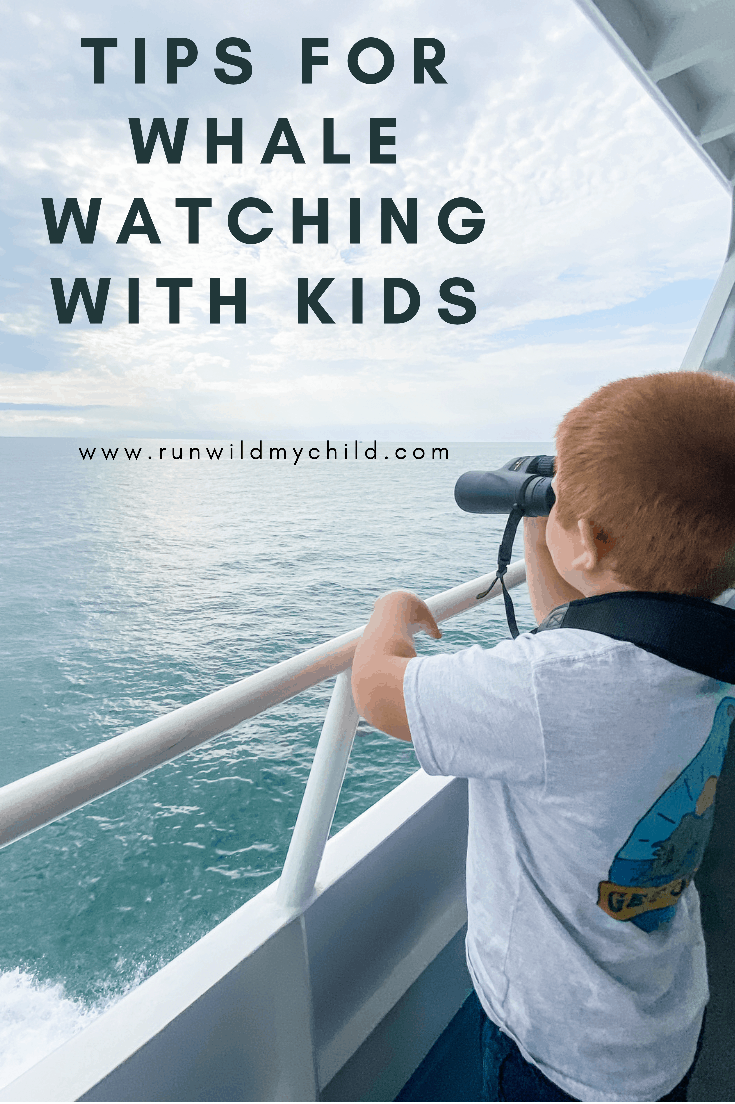
The wonder of whale watching with kids
There’s something truly magical about seeing the world’s largest mammals up-close and personal, right before your eyes, in their natural habitat. Sharing that miracle with your child and watching their eyes widen when a 40-ton cetacean vaults itself clear out of the ocean is something you both won’t soon forget.
That’s the kind of wonder that a whale watch with your kids provides! It’s truly spectacular in a way that’s hard to describe in words. You just have to experience it to understand how massive and magnificent these creatures are. Whale watching is magical for the whole family, no matter what age, interest or ability. It’s nearly impossible not to be impressed by these amazing animals.
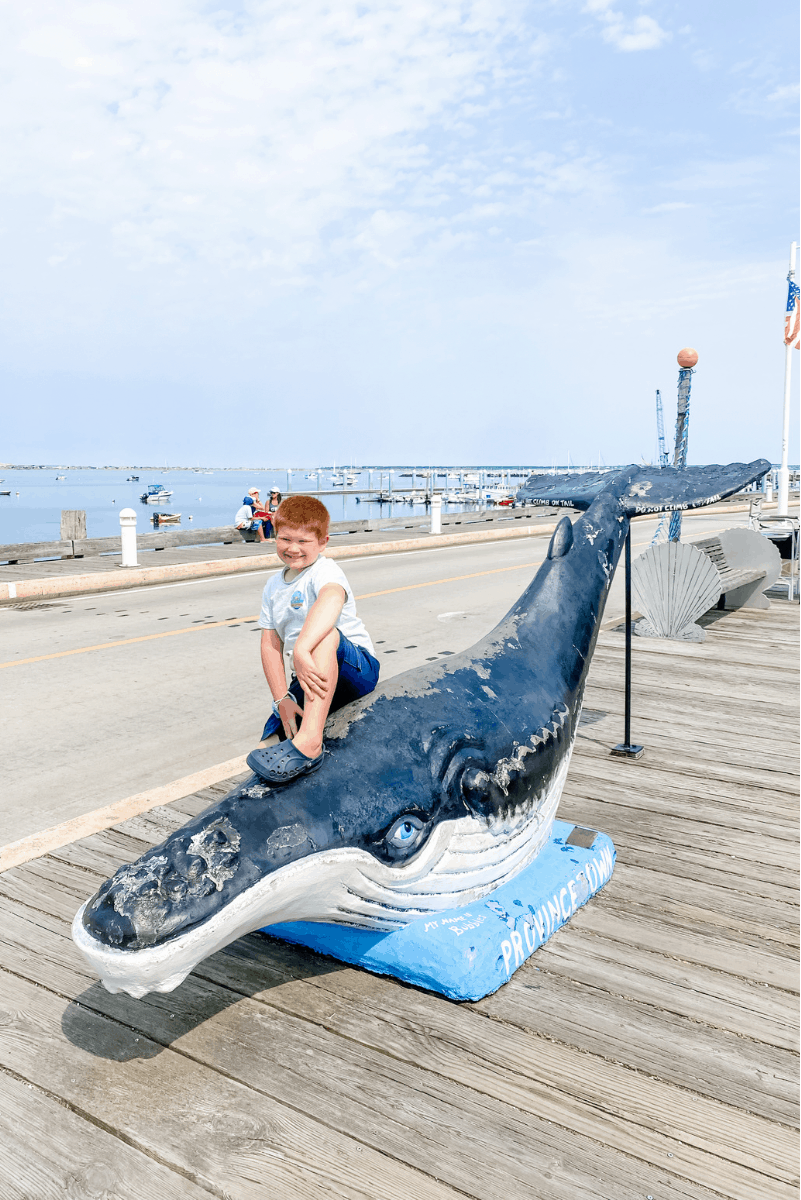
Whale facts for kids
- Whales are mammals – Whales breathe air (just like we do), so they need to reach the surface of the ocean to breathe. To breathe, whales have a blowhole in the top of their heads. Whales also give birth to live young. Baby whales are nursed and taken care of by their mothers until they reach a certain age.
- There are two types of whales: baleen whales and toothed whales – Baleen whales feed on krill and plankton. Toothed whales eat several kinds of fish (tuna, cod, and salmon) and some small mammals like seals.
- The blue whale is the largest animal in the world – It’s also the largest animal that has ever existed! It’s larger than the largest dinosaur ever found.
- Whale tails are unique – Whale tails have flukes or lobes. Each fluke is unique to that whale. Similar to a person’s fingerprints, whale lobes have distinctive traits and markers that are helpful in identifying specific whales and species.
- Whales can swim as fast as 30 miles per hour.
- Some whales hold their breath and can stay underwater for as long as 90 minutes.
- Whales only half-sleep – In order to keep from drowning, whales do not fully sleep as other mammals do. Whales sleep by shutting down half of their brain. This lets the other half of their brain remain alert to make sure they take breaths when needed.
- Whales move in groups called pods – Pods can be as small as two whales and be as big as a hundred or more whales. Larger pods are usually formed when embarking on a long migration.
Conservation value of whale watching
Observing whales in the ocean can be an exhilarating experience for kids and adults. While whale watching is an economic activity that can provide an incentive to preserve them in their natural habitat, it also has the potential to negatively affect whale populations that are targeted for tourism. It is important for whale-watching tour companies to be responsible and understand both the benefits and the potential impacts of this activity.
Responsible whale watching benefits everyone: the observers, the tour operators, the local communities, and the whales! Responsible whale watching offers people the opportunity to learn about whales, the threats they face, and what we can do to help. It also provides a research platform to collect data on the behavior and ecology of whales. Whale watching tours can also provide income for coastal communities and gives locals an economic incentive for caring for the animals.
Whale species and where to spot them
Depending on the location where you’re doing your whale watching, you might see one or more species of whales during whale season. Here are the most common types of whales that you’ll see on a whale watch cruise.
- Minke whales (all over)
- Humpback whales (all over)
- Blue whales (Azores, Quebec, Mexico)
- Killer whales / Orca (Norway, Iceland, Canada)
- Sperm whales (Norway, New Zealand, Azores)
- Gray whales (Mexico, Alaska)
- Right whales (Argentina, Australia, South Africa)
- Fin whales (all over)
- Beluga whales (Arctic, Quebec)
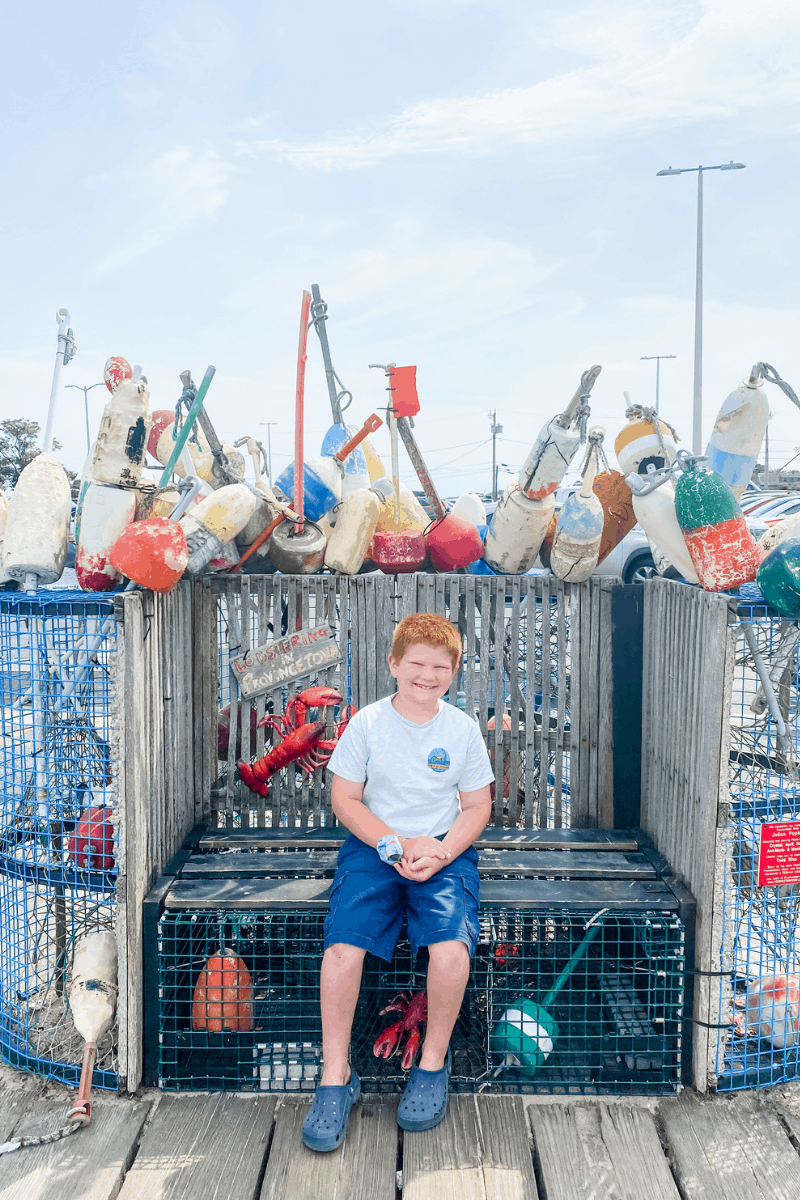
Whale watching tips for parents
Have you been on a family whale-watching adventure with your family yet? Preparing for a four-hour tour out on the ocean with your children may seem daunting. It’s easier to do than you think and even more incredible than you can imagine. We’ve gone whale watching as a family multiple times and I’m here to support you with some tried and true tricks to help you have a successful trip. We want to make sure this is a great experience for your kids. Because kids that love animals and wildlife, grow up to be adults that love, appreciate and protect wildlife and their habitats.
Set realistic expectations
In a world where we are accustomed to everything instantaneously and in on-demand form, this type of excursion may need an explanation for your children. For example, heading out on a whale watch is not comparable to going to a zoo. The animals on this adventure are not kept in enclosures, where they’re easily visible and reliably there, day in and day out.
These whales live in their natural habitat, a vast and wide-open ocean with no barriers. And while they are the biggest animals in the ocean, seeking them out takes time, patience, persistence, and a little luck. Since the first whale watches that I’ve brought my sons on, I’ve always said, “We’re going on a boat ride; we might even see a whale!” Under promising (and then hopefully over-delivering) can never hurt in this situation.
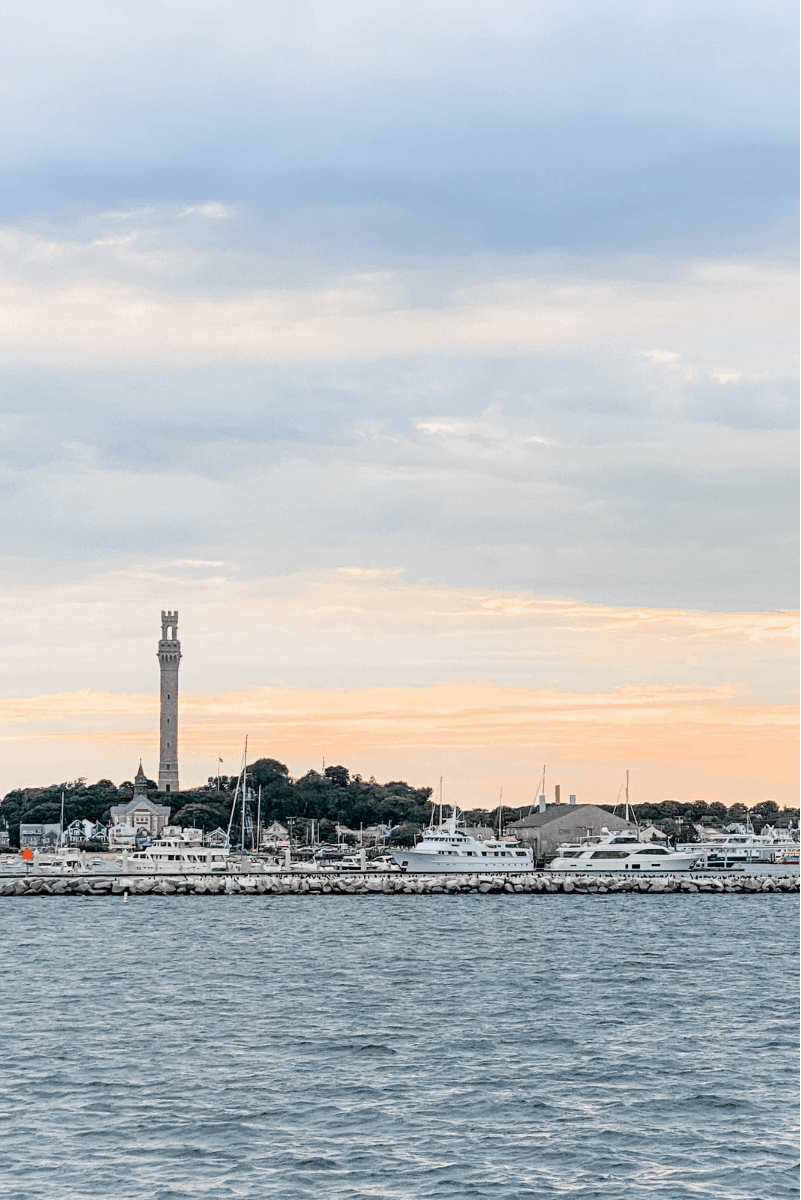
Planning ahead – check the weather
When planning a whale watch for your family, try not to book too far in advance if possible. The weather on the coast can be unpredictable and it’s best to pick a day that you know will have good weather. If you can secure tickets the day of or the day before the tour, that would be best.
Sunny days with no fog and calm winds are ideal weather conditions. Where we live on Cape Cod, there tends to be fog in the early mornings, so we usually avoid the day’s first trip and opt for the afternoon or early evening excursion. Get familiar with the weather in the area where you’ll be doing the whale watching tour and ask when the best time of day would be to go. Also, know your kids and their limitations. If you have little ones that nap in the afternoon, a morning trip is probably best so as to not have an overtired and cranky kiddo.
We went out on one particular whale watch where the wind was so breezy and the water was so choppy that it was hard to stand up on the boat without falling. Despite the rough seas, we enjoyed ourselves and still managed to see whales. However, the Captain decided against traveling all the way out to Stellwagen Bank, which is the ultimate destination for whale sightings in our area. Thankfully, my son was just delighted to be on the ocean and in a boat, so he was not disappointed in the least! (Again, set those expectations low.)
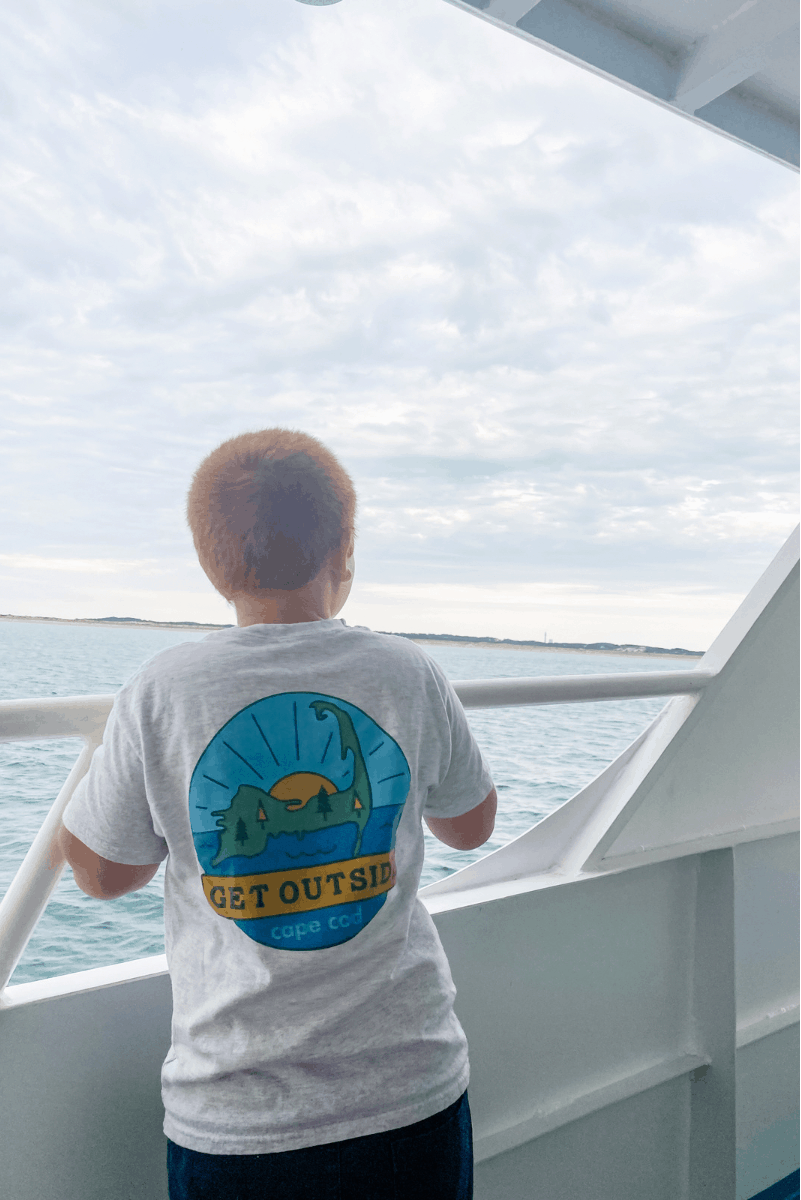
Purchasing your tickets
Most whale watching tour companies have websites that allow you purchase your tickets in advance online. They usually post the daily schedule of the outings and set the expectations on what you’ll see, need to bring, and when/where to arrive for the tour. Sometimes whale watching areas and tours can get booked pretty far out in advance, due to the popularity. As I mentioned above, it’s best to book as close as possible to your tour date (so you have a better idea of weather), but that might not always be possible.
Whale watch tickets can be pricey. Whale-watching tours in our area can cost between $40-$80 per person. To keep costs down (especially for large families), it’s wise to spend a few minutes doing some research to possibly save a few dollars. When you’re ready to purchase your tickets, take the time to see if you qualify for any discounts.
For example, the Dolphin Fleet Whale Watch Company out of Provincetown, Massachusetts, grants a discount for veterans, military, first responders, teachers, and front-line workers. Also, children four years old and younger ride the boat for free! While young kids are allowed on the ships and will enjoy themselves, keep in mind that strollers are also allowed on the vessel, but the boat’s top deck may not be accessible.
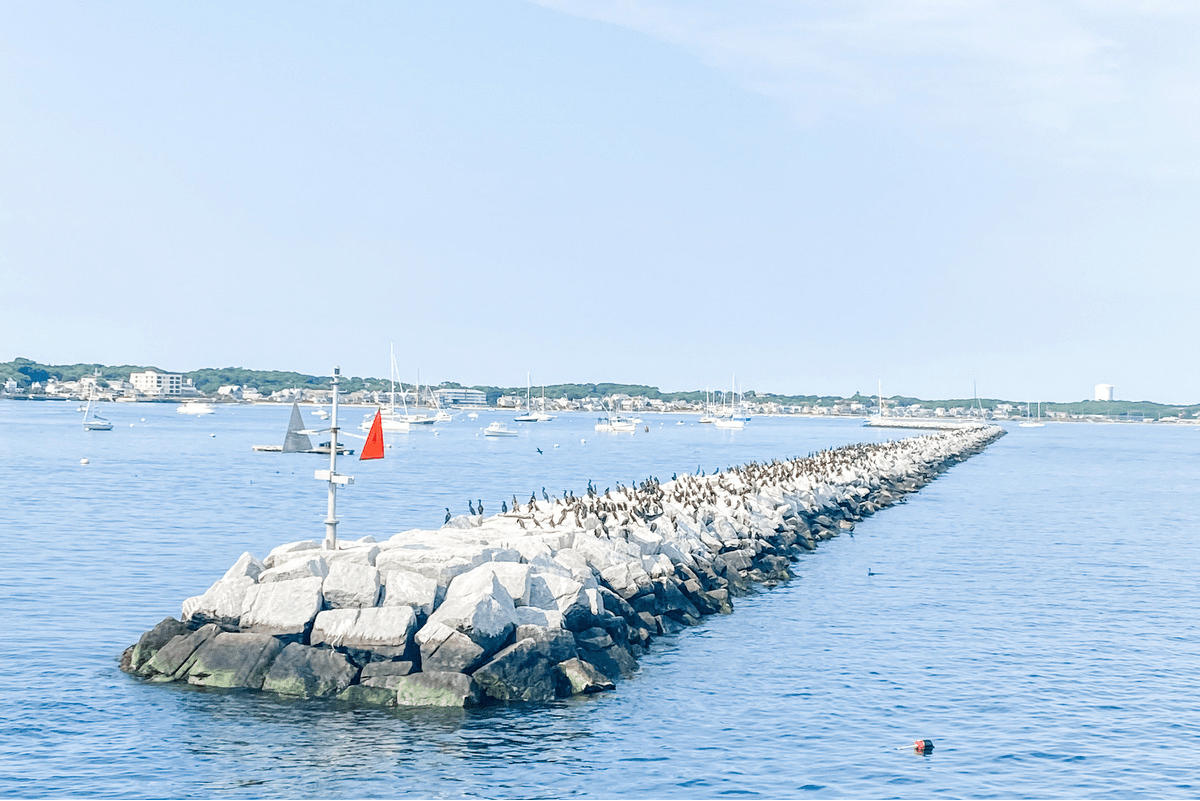
What to pack for a whale watching tour
So now it’s a picture-perfect weather day, and you’ve purchased your tickets. What should you pack for your whale-watching excursion?
- Sunglasses – Polarized sunglasses are a huge help in letting you see into the water, as they cut down on the glare from the sun on the water.
- Binoculars – Get an even more intimate glimpse of these majestic marine mammals up closer, or help the naturalists on the boat look for whales on the horizon.
- Field guide – There are several educational field guides and books with in-depth information about the whales and other marine life that you might see while aboard the boat. Whale tours usually include “downtime” while waiting for whales to surface or traveling to a particular location, so this is a great time to read up on what you might encounter.
- Snacks – Most whale watch boats have a concession stand or snack bar of some variety, but we always pack our food and plenty of water. Also, keep in mind that many trips are 3-4 hours long, so make sure to bring a meal if necessary.
- Appropriate clothing – Be sure to bring a sweatshirt or waterproof jacket with you, depending on the weather forecast. It can be an additional 10-15 degrees cooler offshore! Flat, rubber-soled shoes are a good idea on a boat in motion, too; not everyone is born with sea legs! Life jackets will be provided by the tour company.
- Reef-safe sunscreen – Whale watching tours are hours long and there’s not always a way to get out of the sun. Bring a hat and use reef-safe sunscreen for protection.
- Sea-sickness remedies – If you’ve ever experienced sea-sickness, you’re already aware that it’s a quick way to ruin your day on the water. One way to avoid this is to take a product like Dramamine before boarding the boat. If you don’t feel comfortable with that, you can bring sea-bands, which push the pressure points on your wrists to reduce sea-sickness symptoms. I’ve also recently discovered ginger lollipops that are super yummy and thought to help with an upset tummy.
- Cash– This can vary by boat, but many ships do not accept credit cards. Also, it’s nice to tip the crew at the end of your trip!
- Something to do – If your kids tend to get bored easily, consider bringing something along to have a few fun ways to keep them entertained. Just hanging out on a boat in the ocean is pretty fun, but when the novelty wears off, it’s a good idea to have a game, book, crayons and coloring book, a puzzle, or a few favorite toys on hand. The naturalists on board do a great job keeping things exciting, but it’s always best to be prepared.
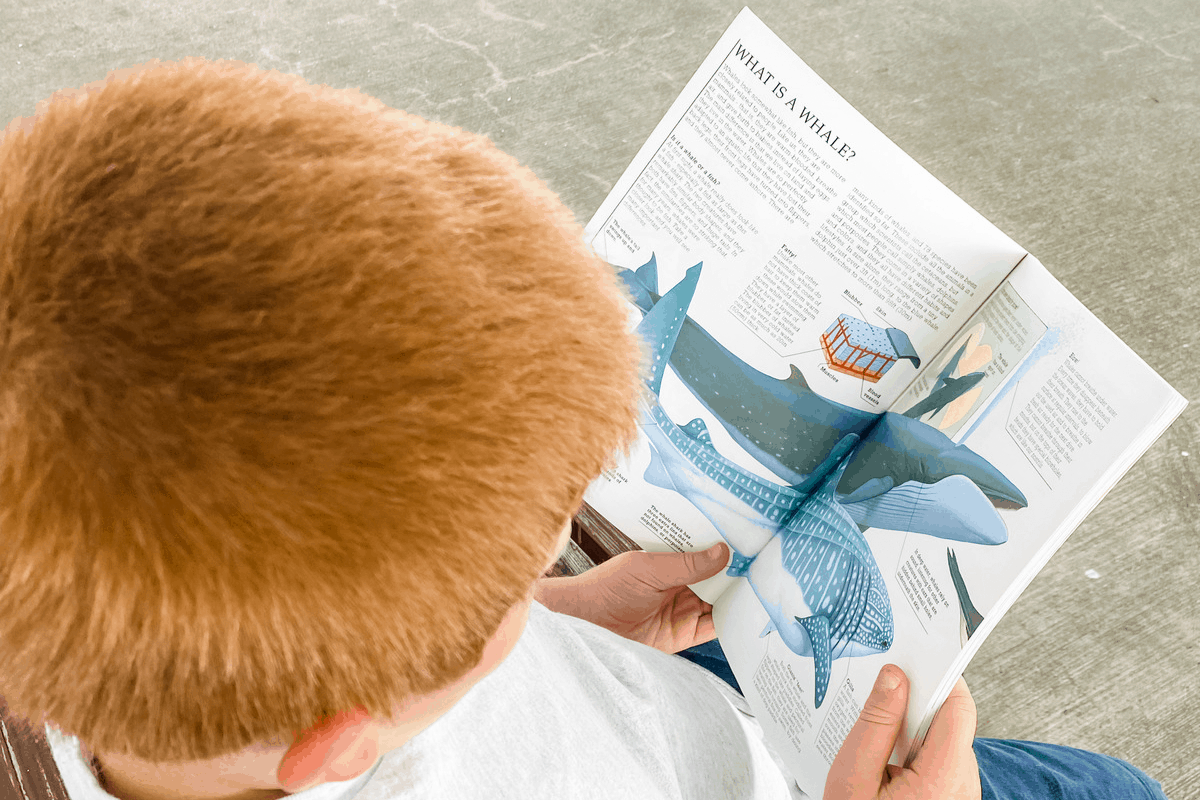
Be prepared to ask questions!
Come on; you didn’t think this would be a leisurely boat ride, did you? No such luck! We’re here to learn, too!
Once settled on the ship, a naturalist will introduce themselves and explain all about the whale’s physical characteristics, what they consume, their behaviors, why and where they migrate, and more. For instance, on the Dolphin Fleet whale watch, they pass around baleen pieces, the bristled plates used to intercept food within the whale’s mouths. Seeing and touching the baleen instigated a question with my 7-year-old son, which prompted questions.
“Do these whales have teeth too, or just baleen?” Our naturalist for the day, Dennis Minsky, was a gracious host and teacher. His career with the Dolphin Fleet began over 25 years ago, and he has been a biologist and educator for 45 years. Dennis’ enthusiasm was apparent while answering the myriad of children’s questions, and he even remembered all of their names for a shout-out at the end of the trip.
Kids are naturally curious and they’re bound to have questions. Help them gain the confidence to speak up and ask their questions. The answers may even prompt foll0w-up questions and lead to a love of learning more about these majestic animals.
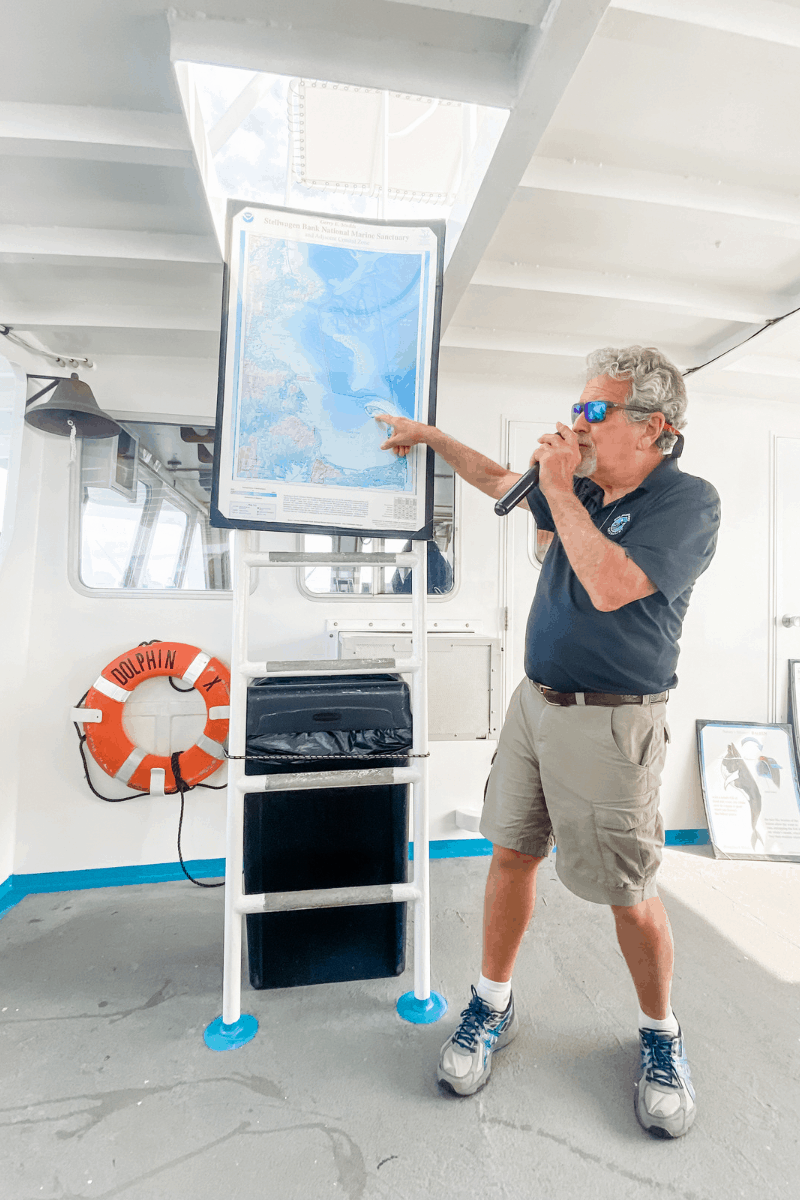
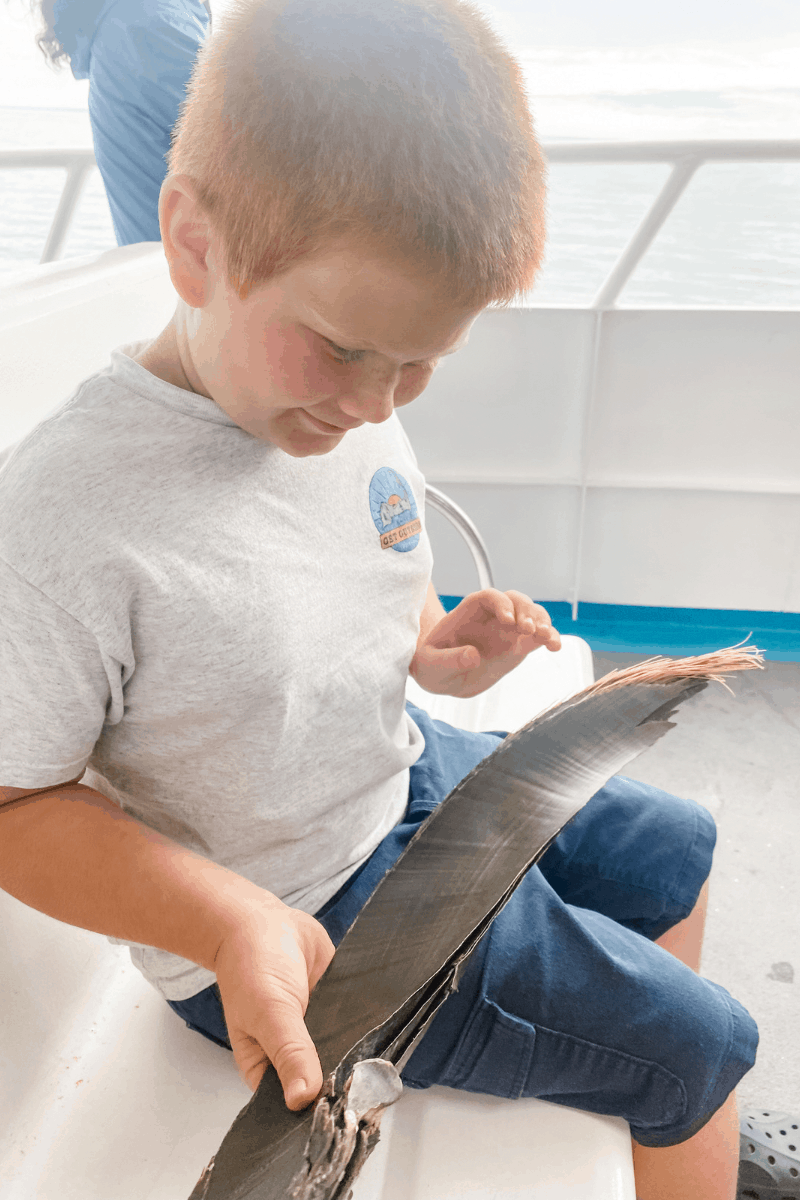
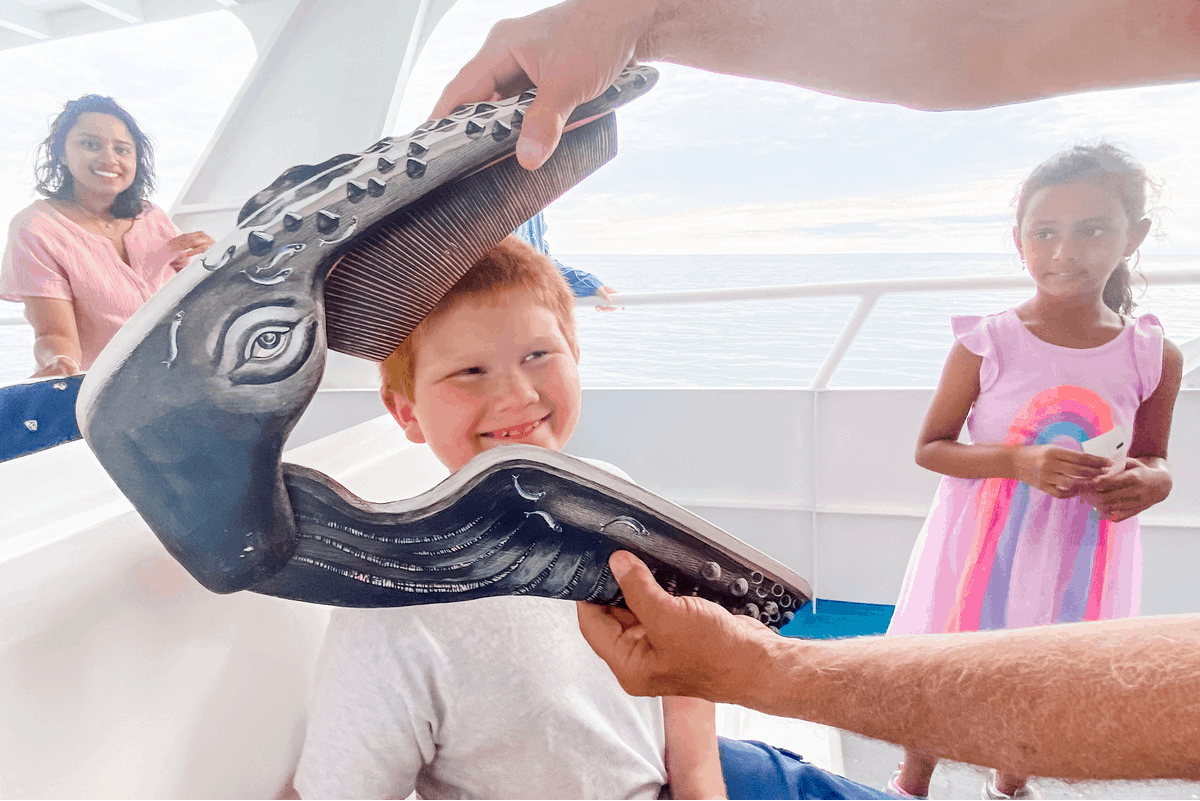
Navigating the boat
When the naturalists spot whales, they may use terms like port-side, starboard-side, bow, or stern to describe the whale’s location relative to the boat. So let’s familiarize ourselves with these terms now, and you’ll be expert mariners by the time you board the ship.
The back of the boat is called the stern. The front is called the bow. So if you’re standing at the stern (back), facing the bow (front), the port side is on your left, and the starboard side, your right. A good trick to remember is that port and left both contain 4 letters. The boat crew may also use the hands of the clock to point out a whale. Twelve o’clock would be the bow, and six o’clock would be the stern, and so forth.
Also, if you want to be super mature like me, you can show your kids where the bathrooms are by walking them to the poop deck. Yes, that’s an actual thing.
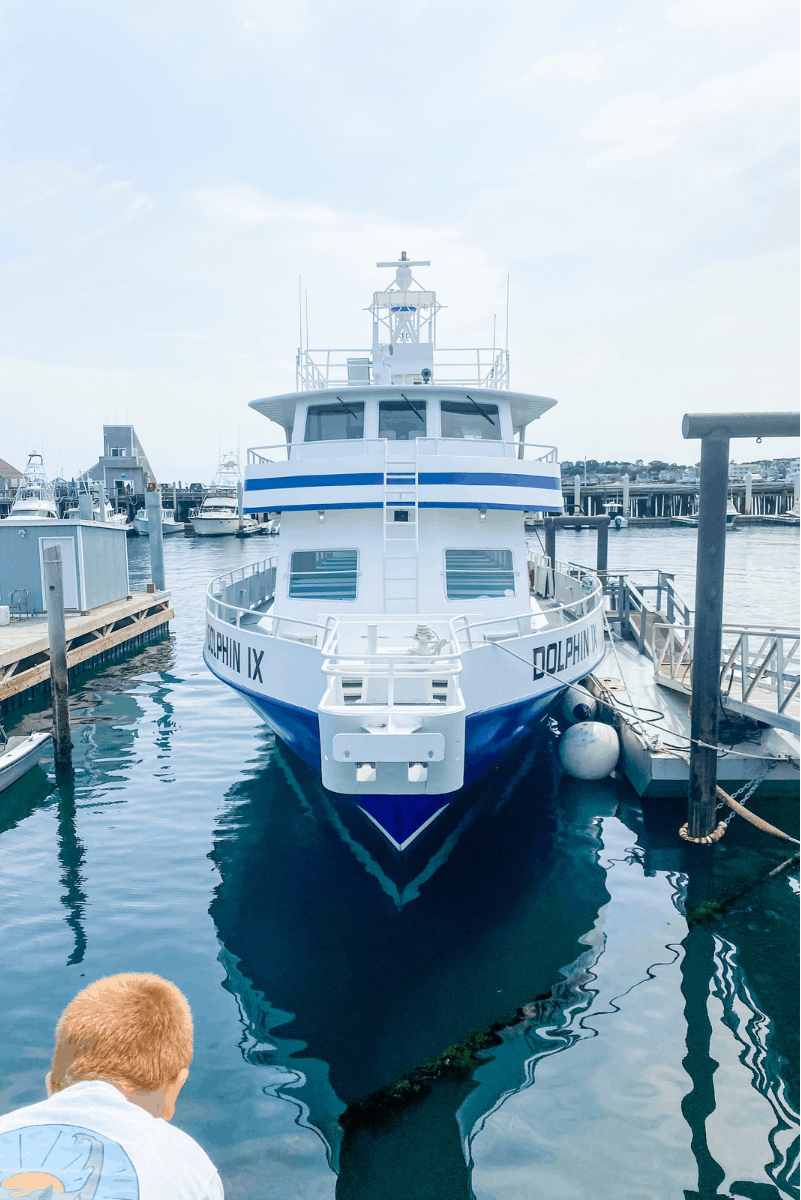
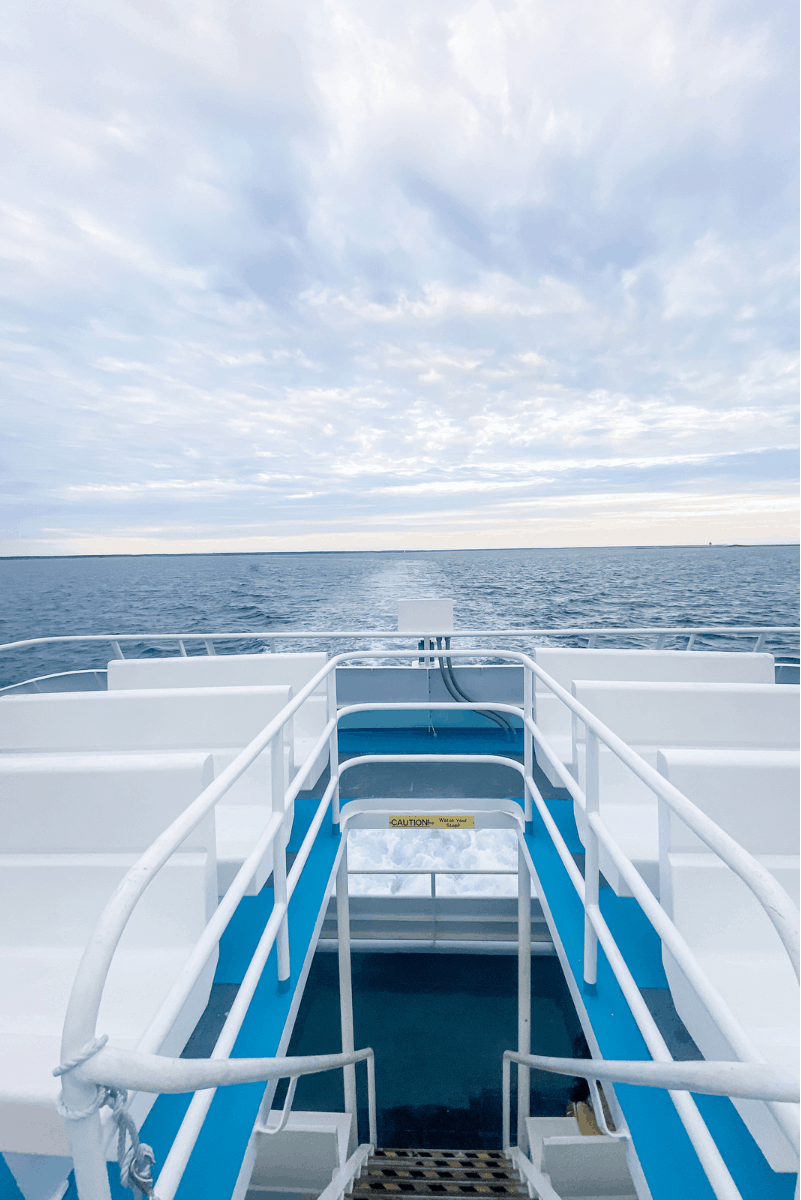
How to spot a whale
I always assumed the whale watch boats had some sort of super-sonar magnetic-laser-vision on board that could detect the whales and that’s how they found them.
Nope. It turns out that it’s much more straightforward than that. On the Dolphin Fleet boats, the goal is ultimately to get to Stellwagen Bank, which is the premier feeding territory for humpback whales in the North Atlantic. So, while traveling to our destination, the Captain and naturalists simply use their ears and eyes instead of elaborate gadgets to find the whales.
The good news is that you can do the same thing! Keep your eyes peeled and listen. You might just spot a whale first! Want to know what to look for and listen to? Here’s the scoop…
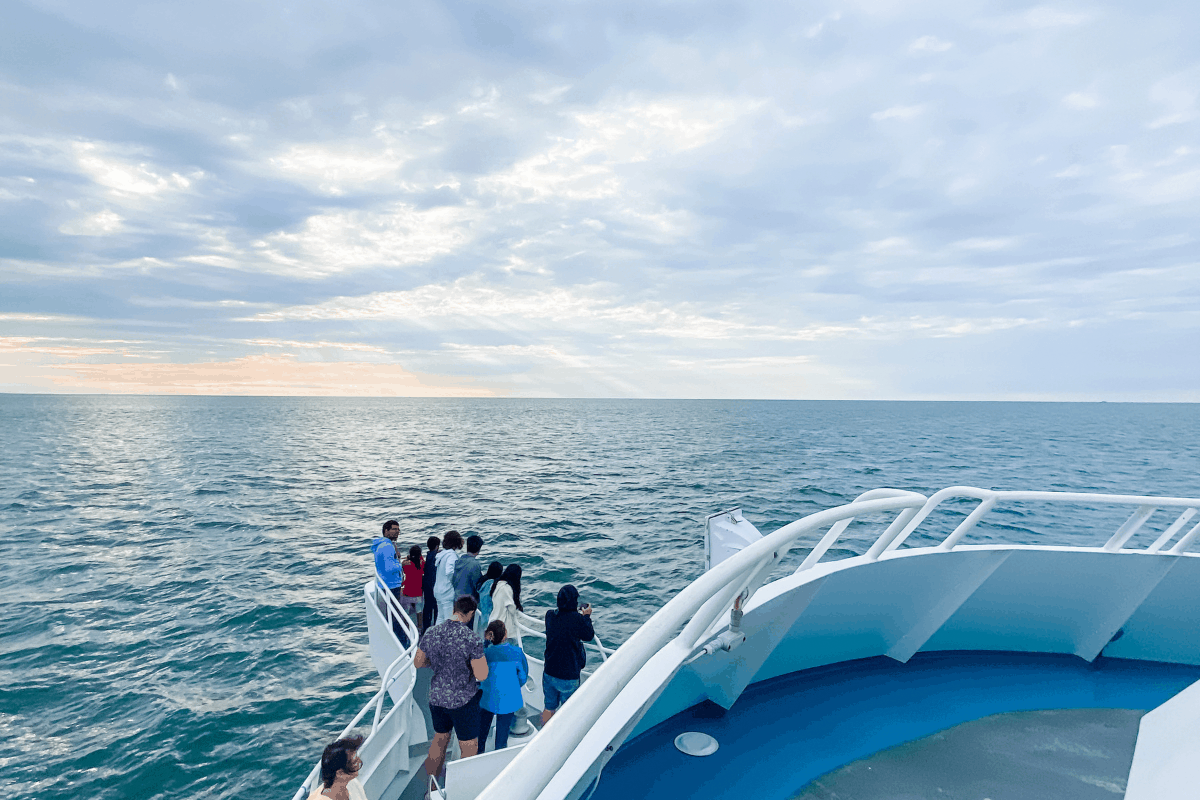
What to look for when whale watching
Breaches, lobtailing, or fin-slapping. Breaching is when a whale’s body fully exits the water and then slams back down, creating a large splash. Lobtailing is when the whale slaps the water with its tail fin repeatedly, and fin-slapping is when the whale uses its pectoral fins to hit the water while laying on its side.
Another lesser-known indicator of a whale’s presence would be the spouts of mist created by the exhalations from the whale’s blowholes when they surface for a breath of air. These spouts are visible for miles on a clear day!
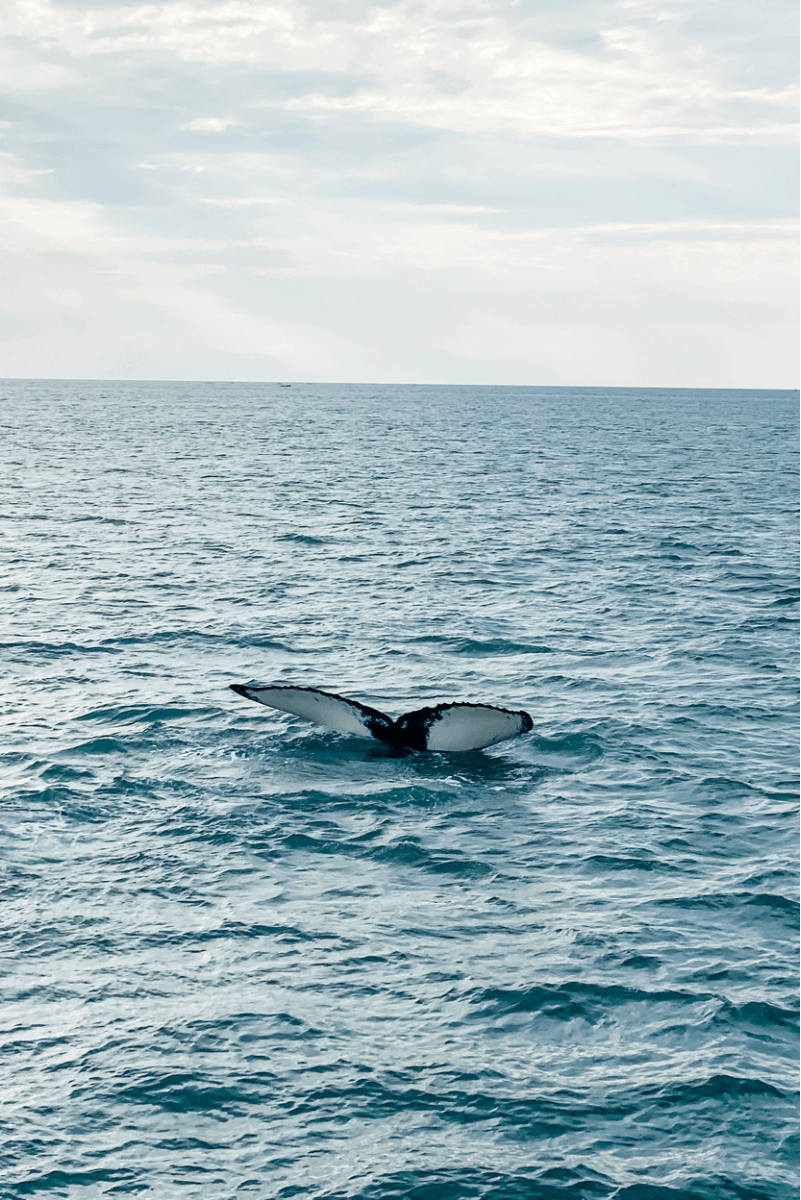
What to listen for when whale watching
When you’re trying to spot a whale in a huge ocean, keep your listening ears on. “PSHHHH!” is the noise that the whale’s exhalation makes when the whale surfaces for a breath. This sound travels for quite a distance, so keep an open ear. Another sound that some whales make is their songs, even with no vocal cords. Did you know that only the male humpback whales sing, and the sound can travel up to 10,000 miles?
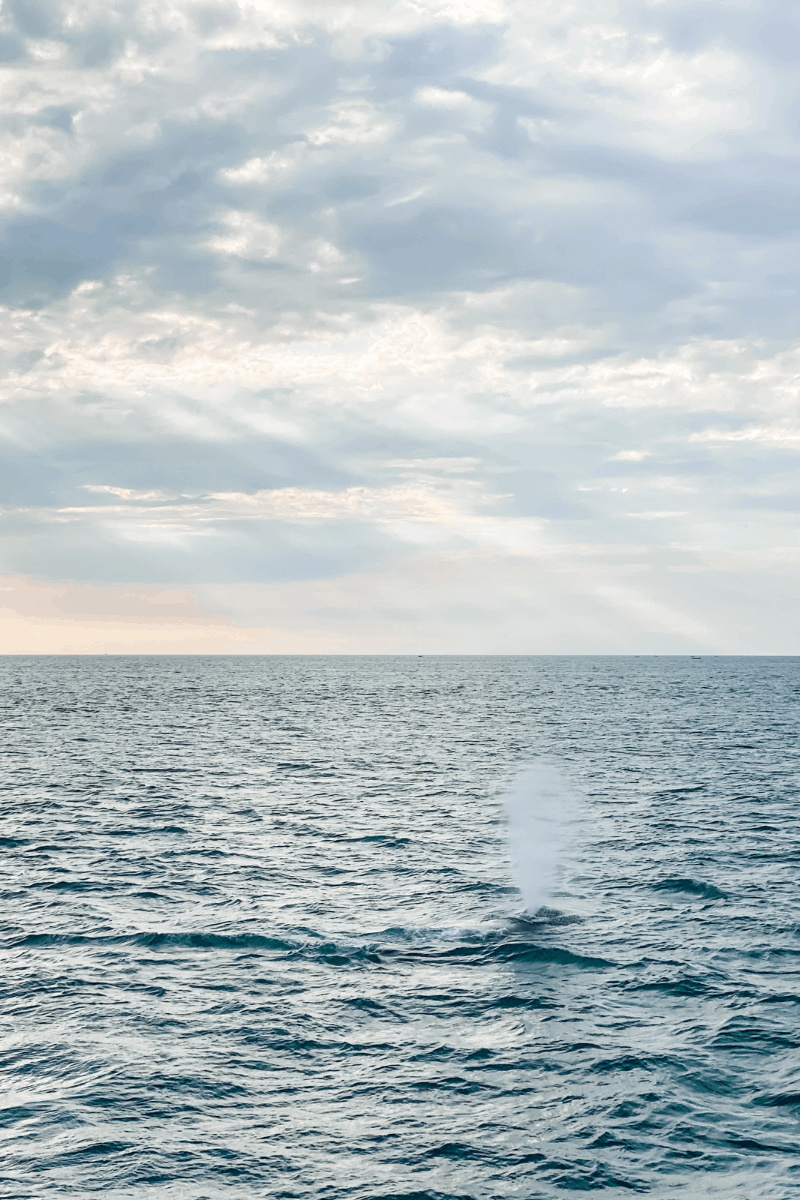
What kind of whales do you see?
Since we live on Cape Cod in Massachusetts, we use the Dolphin Fleet whale watch service that operates out of Provincetown, located at the most northern point of the Cape and closest to Stellwagen Bank. This location in the North Atlantic Ocean is a feeding ground during the summer months for many whales species and one of the best whale-watching destinations in the world.
Some of the most common species on animals you may encounter while on a whale watch in the Cape Cod area would be:
- Humpback whale
- Minke whale
- Fin whale
- Common dolphin
- Atlantic white-sided dolphin
On this particular trip, the whales we saw were all humpbacks. Our naturalist, Dennis, knew all of them by name. Freckles, Scylla, and Nile, were all seen spouting and diving, feeding and gliding through the cold 60-degree water of the Atlantic. We were most thrilled to spot Nile, seen on whale watches in the past, and highlighted in a book written by a local author. Nile is a female humpback who was born in 1987. “Almost as old as you, mom!” my son shouts. Yes, almost as ancient as me. She’s been swimming the ocean around the same land that I’ve been living on my whole life.
What else can you see on a whale watching tour?
Oftentimes, there’s a lot of other wildlife and aquatic animals that you can see on whale watching tours. Depending on where you are taking your whale watching tour, be on the lookout for some of the following animals: bald eagles, dolphins, sea turtles, seals, sea lions, sardines, albatross, pelicans, sharks, otters, blue herons, and more! Just remember to keep your eyes peeled!
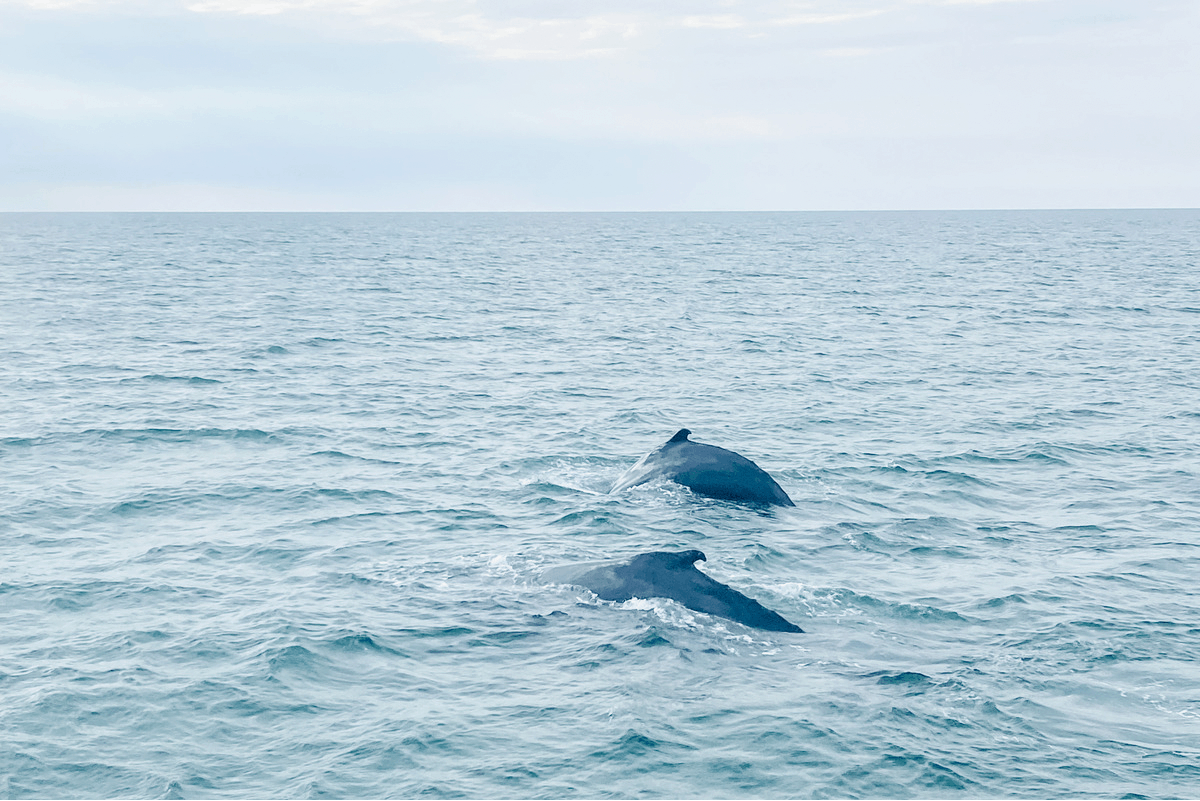
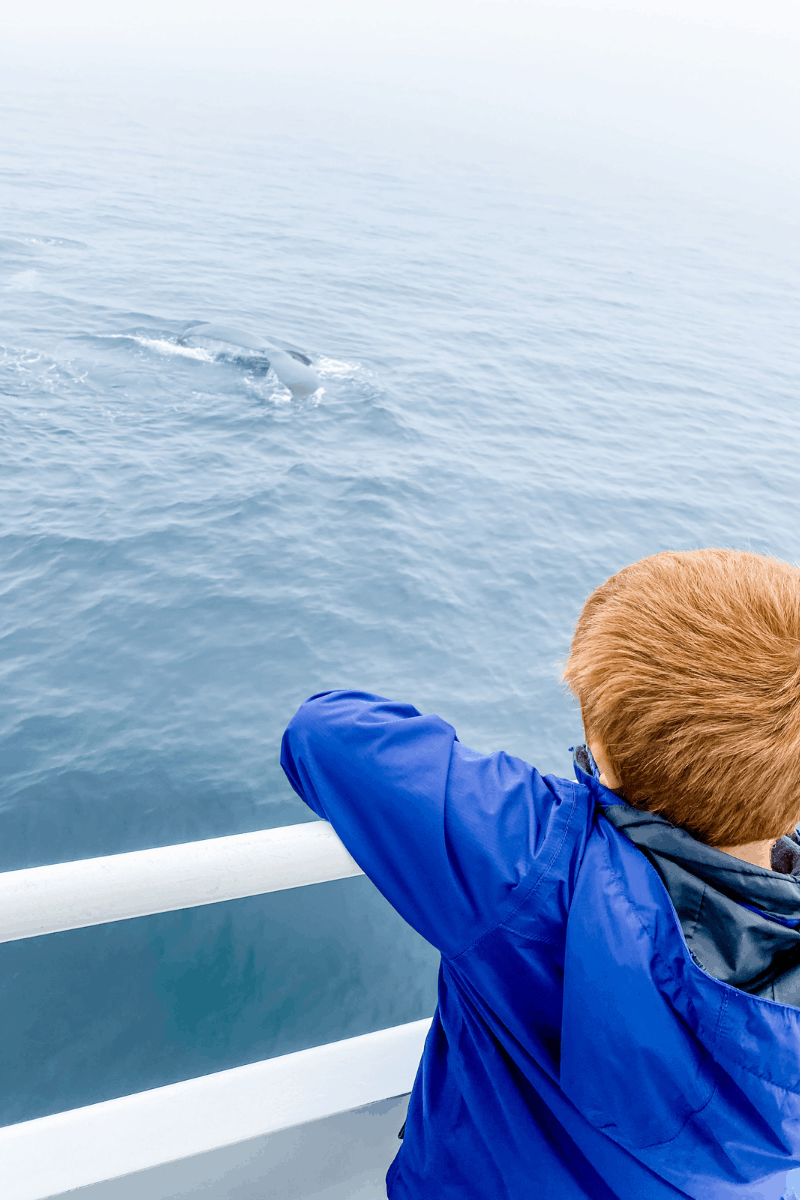
Why go on a whale watch?
Some of my favorite things in life are combined seamlessly when we’re on a whale watch: (1) spending time in nature, (2) connecting with my children, and (3) getting a chance to see marine animals in their natural habitat. A desire to bring others to see and love these creatures grew out of my childhood – I was raised learning about whales, realizing they need our protection, and advocating directly and passionately for them.
Thanks to the Marine Mammals Protection Act and the Endangered Species Act, enacted in the 1970s, whale species such as the humpback have made a comeback from near extinction. In addition, whale watches provide a personal experience for the passengers, and are a great way to foster an emotional connection between humans and animals.
We cannot protect something we do not love, we cannot love what we do not know, and we cannot know what we do not see. And touch. And hear.”
-Richard Louv, Last Child in the Woods
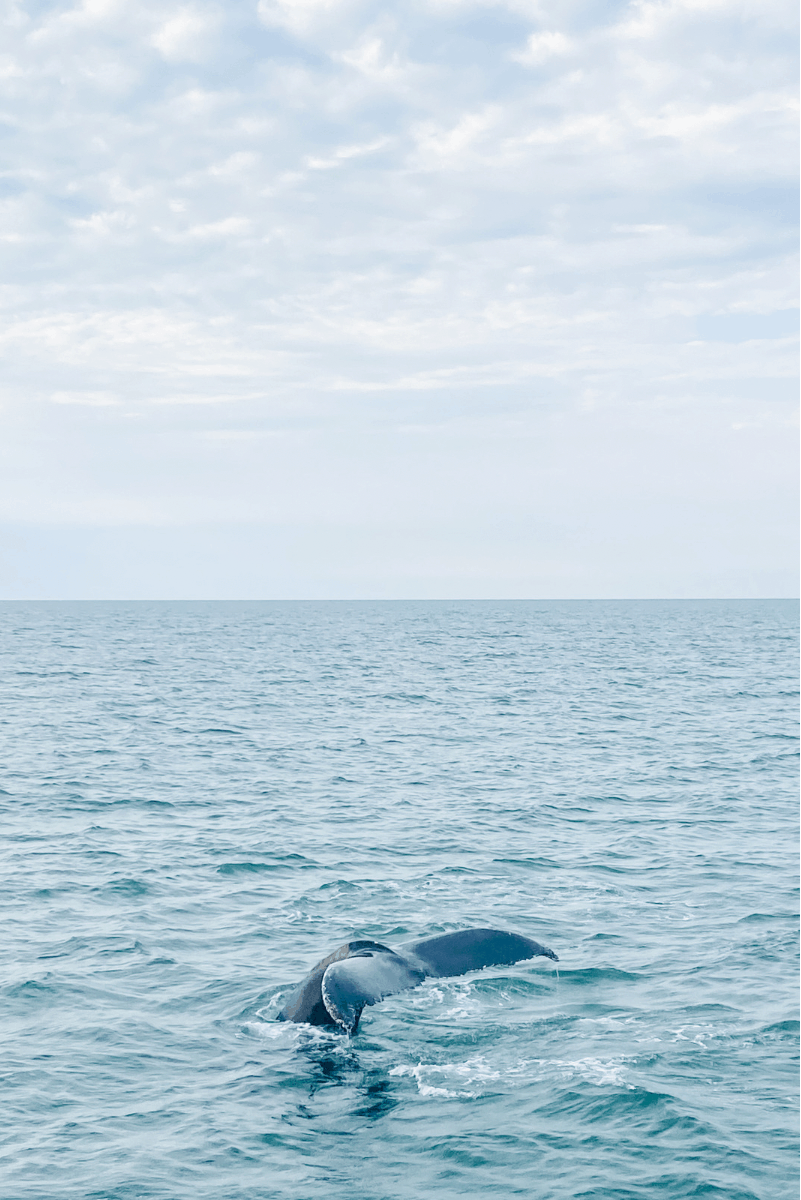
Best US destinations for a whale watch with your kids
You don’t have to be on Cape Cod to spot whales. In addition to our phenomenal whale watching location, here are a few other places and reputable whale watching tour companies in the US where you can spot whales with your family:
- Dolphin Fleet, Provincetown, Massachusetts
- Cape May Whale Watch & Research Center, Cape May, New Jersey
- Capt Lou’s Whale & Dolphin Watching Tours, Freeport, New York
- Bar Harbor Whale Watch, Bar Harbor, Maine
- Juneau Whale Watch, Juneau, Alaska
- Rudee Tours, Virginia Beach, Virginia
- Monterey Bay Whale Watch, Monterey, California
- Seattle Orca Whale Watching, Seattle, Washington
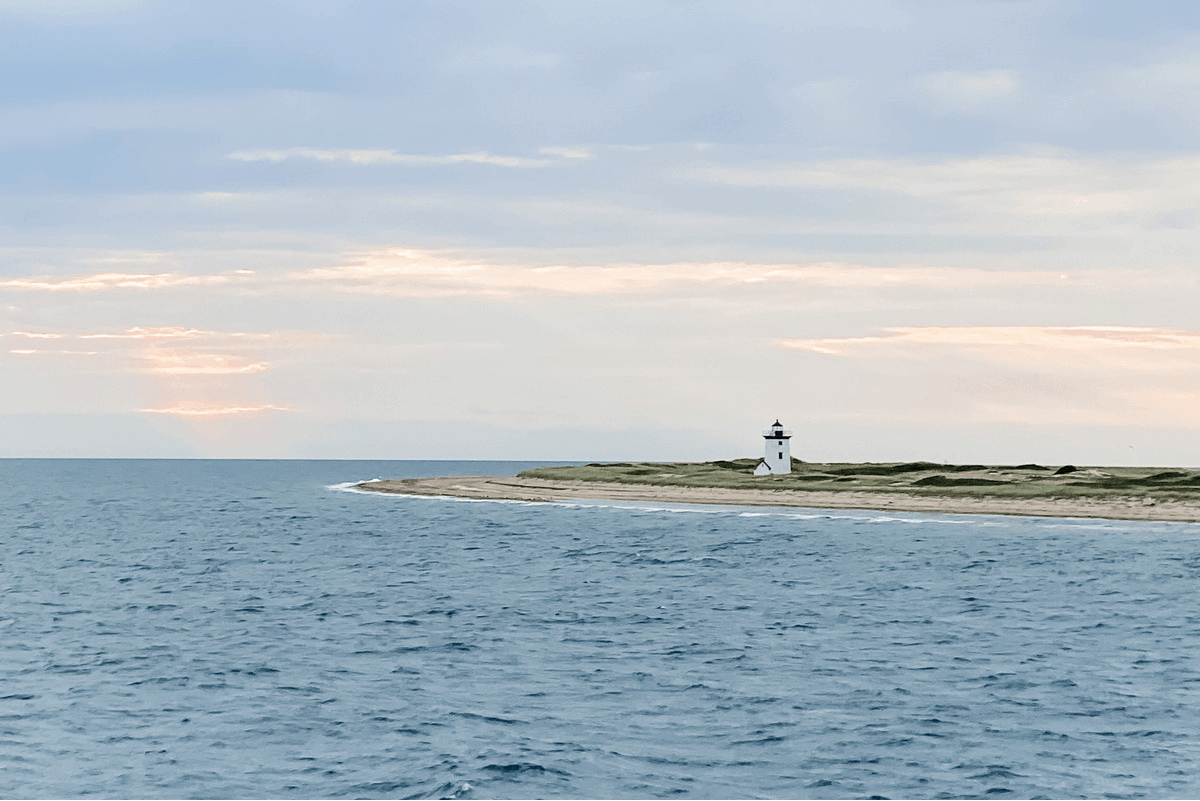
Whale book recommendations
If you want to learn more about whales (either before or after your whale watching adventure), here are some really beautiful and educational books about whales to add to your shelves or check out from your local library. Who knows, maybe these books will help turn your little ones into future marine biologists.
- “Closer to the Great Whales” by Peter Trull
- “Whales, an Illustrated Celebration” by Kelsey Oseid
- “Welcome Home, Whales” by Christina Booth
- “The Boy and the Whale” by Mordicai Gerstein
- “Whales, Dolphins, and Porpoises” by Mark Carwardine
Have you ever gone whale watching with your kids?

About the author
Lissy lives near the ocean on Cape Cod, Massachusetts with her husband, 2 rambunctious boys (aged 4 & 7), and an ever-growing number of pets. She grew up walking nature trails and finding joy in the beauty of nature. She now shares that love for local adventures with her community through her blog, “Get Outside Cape Cod”. Lissy knows that everyone can benefit from spending more time outdoors, and wants to inspire and support families to do just that!
You can find more from Lissy in the following online locations:
Instagram: @getoutsidecapecod
Website: Get Outside Cape Cod
Facebook: @getoutsidecapecod








Lissy, that was so informative, and enticing, and inspirational. You’ve really done a terrific service to help prep visitors to get the most out of a whale watching excursion while on Cape Cod, and I’ll bet some of the locals would have to admit that they would also benefit from these spot-on suggestions! I only wish I’d had your helpful guide before packing up my Truro Central School fourth graders off to look for whales, but it’s still great to have these tips now. Keep up the good work and thank you!
I like the advice to say “we’re going on a boat ride and we might see a whale!” I still remember the disappointment of my 5th grade whale watch where we saw no whales. I’ve been on dozens since that were amazing. Thanks for this article. I plan to go next summer when my youngest is 3.
I recently stumbled upon your blog and it truly surprised me, from the thought-provoking information to the awe-inspiring pictures of whales, which made for an amazing reading experience! I extend my sincerest gratitude for providing me with such insightful knowledge about whale watching. Speaking of which, I have been following Boattime Yacht Charters ever since, as they are one of the finest operators when it comes to providing Whale Watching Tours.